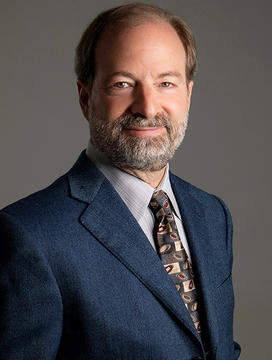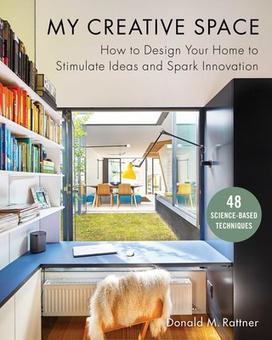Donald M. Rattner *85 Shows You How to Make Your Home Stimulate Creativity

My Creative Space: How to Design Your Home to Stimulate Ideas and Spark Innovation (Skyhorse) is filled with 48 scientifically-inspired ways to make your home more creative: some practical on the daily (“Look at Something Blue”) and others more whimsical (“Daydream”). Complemented by plentiful pictures and examples of the 48 prompts in action, My Creative Space aims to inspire readers to make their homes work for them.

Opening lines: Several times a year I travel around the country to deliver a talk or run a workshop based on the material in this book. Like many presenters, I like to engage with the audience at the start of the event by calling for a showing of hands in response to a question. My query is simple, but comes with a twist.
How many people here live at home? I ask.
My question is often greeted with a respectable laugh as hands climb confidently into the air. Invariably, though, a few people will shoot me a puzzled look instead, or titter nervously while looking to see what others in the room are doing. For their benefit I’ll repeat the question with my hand up, until everyone understands that they can answer straightforwardly without fear of falling for a prank.
Once in a while I might be confronted with a recalcitrant holdout. On those occasions I’ll ask the reluctant responder if by any chance he or she lives at the office of the gym instead. (Between you and me, I suspect some of them do.) Ultimately, most decide to be a good sport after all and join in with those who have patiently kept their hands high.
I then follow up my initial survey by asking the attendees if they would like to improve their ability to be creative. This time the response is almost always unanimous in the affirmative.
So here’s the good news, I announce. Everybody here lives at home. And everybody here would like to enhance their creativity.
Then I deliver the bad news. I tell them that I can almost guarantee that every person in the room is underutilizing an enormously powerful creative asset in their possession, something so potent it can change how their mind works when they are being creative. For the better, I add reassuringly.
I pause for the moment to let that remark sink in, and perhaps build a little suspense before revealing the identity of this mysterious resource. Then I go in for the kill, the coup de grâce, the denouement.
That asset, I announce, is their home.
And so it is with you. Though we have probably never met, I feel safe in saying that by picking up this book you have signaled a desire to up your creative game. That desire may be driven by career, personal enjoyment, child rearing, or other motivation. I also figure you live at home, in which case I remain reasonably confident that you too are sitting on (or in) a resource for achieving your goal that is going largely unused.
My goal in writing this book is to show how you can unlock the hidden power of home to boost creativity and spur innovation. That goes for just about any home you are likely to have. It doesn’t matter what style it is, how many square feet it holds, how elaborately it’s decorated, where it’s located, or whether it’s a freestanding house, apartment, recreational vehicle, houseboat, teepee, tiny house, converted shipping container, or dorm room. What’s important is that you have a place that you identify as your sanctuary, your place of refuge, a safe harbor that you have carved out from the rest of the world as your own. If such a place exists, then you can benefit from the techniques I share in this book.
Reviews: “Space matters—a lot! It is the stage on which we play out our lives. This book gives readers tangible tools for creating spaces that foster creative problem solving. This is something we all need!" —Tina Seelig, Professor of the Practice, Stanford School of Engineering, Author of InGenius: A Crash Course on Creativity and What I Wish I Knew When I Was 20











No responses yet